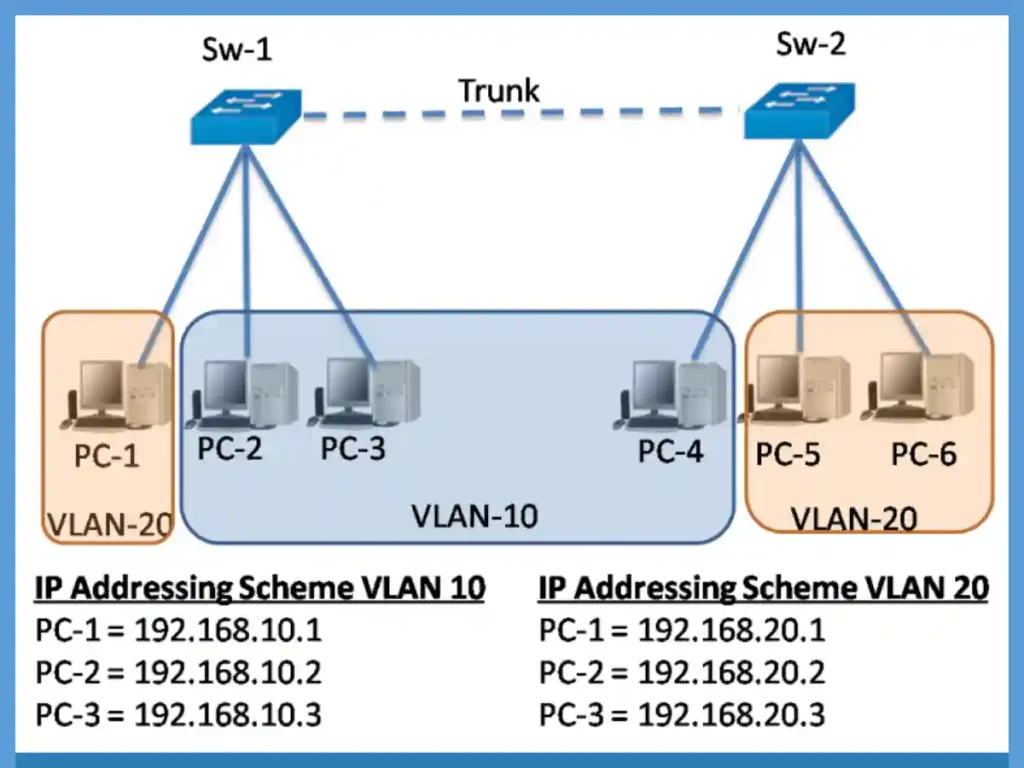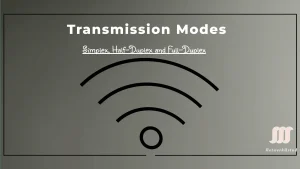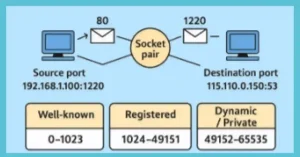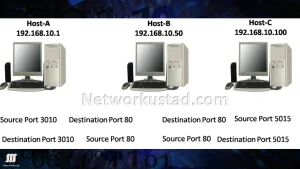Each VLAN in the network requires a unique IP subnet because two devices in the same VLAN with different subnet addresses cannot communicate. This is a common problem during VLAN configuration, and we can solve it by identifying the incorrect IP address configuration and changing the address to the correct one.
For example, if you want to connect a client anywhere in VLAN 10, you must have a valid subnet configuration. If you want to communicate outside the VLAN, you must have a valid default gateway. The default gateway must be the VLAN 10 SVI address. In the figure below, PC-2 cannot connect to PC-3 and PC-4, but PC-3 and PC-4 can communicate.
A check of the IP configuration settings of PC-2, shown in Figure 2, reveals the most common error in configuring VLANs: a wrongly configured IP address. PC-2 is configured with an IP address of 192.178.20.1, but it should have been configured with 192.168.20.1.
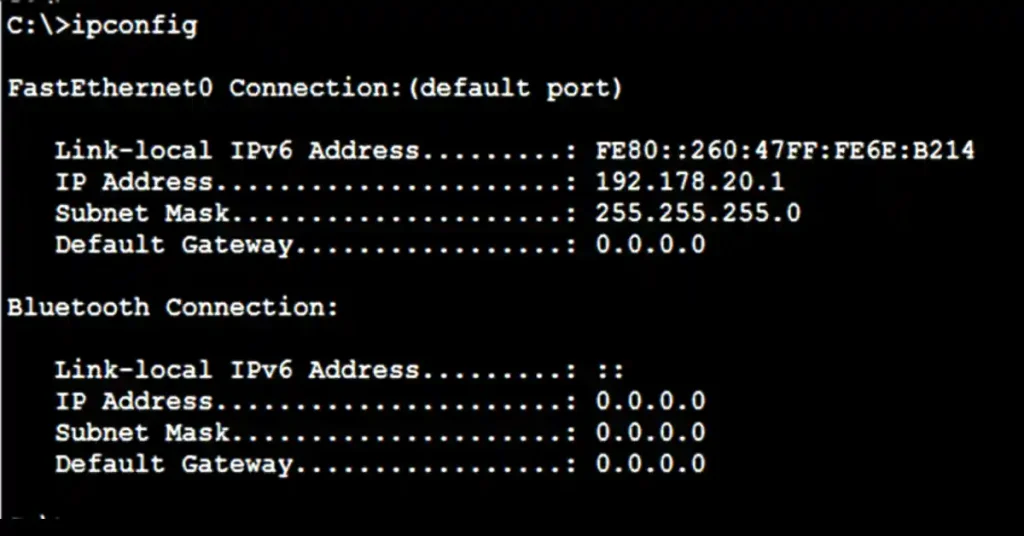
How to Fix VLAN Connectivity Issues for CCNA and CCNP
Change the PC-2 IP address to the correct IP address, 192.168.20.1. The PC-2 Ethernet configuration now shows the updated IP address of 192.168.20.1. The Figure below illustrates the output on the bottom and reveals that PC-2 has regained connectivity to the Web server found at IP address 192.168.20.1.
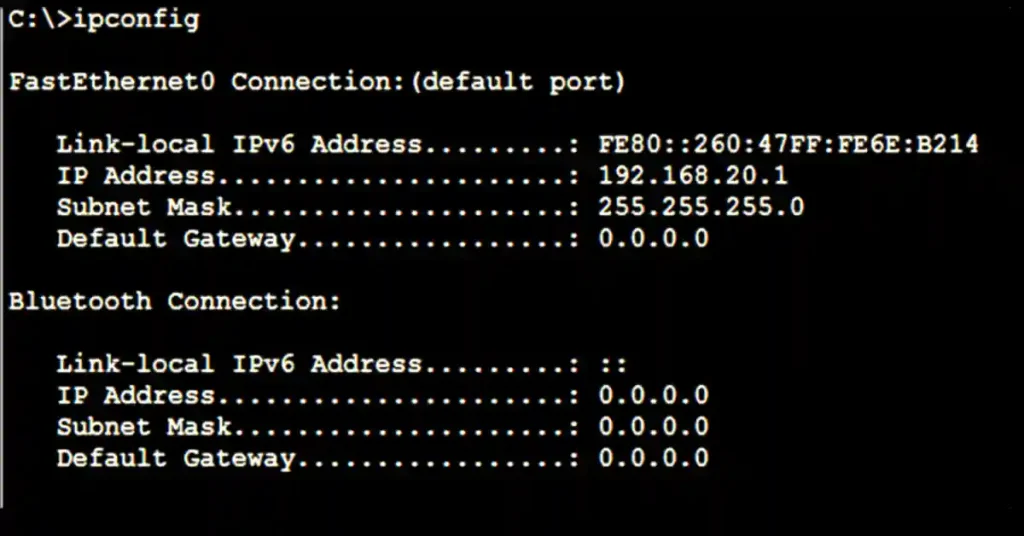
How to Configure Switched Virtual Interfaces for VLANs in Cisco CCNA
A routed interface in IOS represents the IP addressing space for a VLAN connected to it. Since the VLAN has no physical interface, the Switch Virtual Interface provides Layer 3 processing for packets from all switch ports associated with the VLAN.
With this interface, the switch uses virtual layer 3 interfaces to route traffic to another layer 3 interface, eliminating the need for the physical router. For virtual interface configuration, ensure your switch has a VLAN represented by the SVI you want to create.
To configure an SVI on a Cisco switch, you need to create a VLAN and assign an IP address to its corresponding SVI. Below is the step-by-step process with Cisco IOS commands:
Create the VLAN: Ensure the VLAN exists on the switch before configuring the SVI.
Switch> enable
Switch# configure terminal
Switch(config)# vlan 10
Switch(config-vlan)# name SALES
Switch(config-vlan)# exitConfigure the SVI: Assign an IP address to the SVI for VLAN 10 to enable Layer 3 routing.
Switch(config)# interface vlan 10
Switch(config-if)# ip address 192.168.20.1 255.255.255.0
Switch(config-if)# no shutdown
Switch(config-if)# exitEnable IP Routing (for inter-VLAN routing): If the switch needs to route traffic between VLANs, enable IP routing.
Switch(config)# ip routingVerify the Configuration: Use the following commands to verify the SVI and VLAN configuration:
Switch# show vlan brief
Switch# show ip interface brief
Switch# show running-config | section interface vlanExample Output:
Switch# show ip interface brief
Interface IP-Address OK? Method Status Protocol
Vlan10 192.168.20.1 YES manual up upThis configuration ensures that VLAN 10 devices can communicate with the SVI as their default gateway, enabling intra-VLAN and inter-VLAN communication when routing is configured.
Troubleshooting VLAN Connectivity Issues
If devices in the same VLAN (e.g., PC-2, PC-3, and PC-4 in VLAN 10) cannot communicate, follow these steps to identify and resolve the issue:
Verify IP Configuration: Check the IP address and subnet mask on the affected device (e.g., PC-2).
Example: PC-2 has IP 192.178.20.1, which is incorrect for VLAN 10’s subnet (192.168.20.0/24).
Solution: Change the IP address to 192.168.20.x (e.g., 192.168.20.2) with a subnet mask of 255.255.255.0 and set the default gateway to the SVI address (192.168.20.1).
Check VLAN Assignment: Ensure the device’s switch port is assigned to the correct VLAN.
Switch# show vlan briefVerify that the port connected to PC-2 (e.g., FastEthernet0/2) is in VLAN 10.
If incorrect, configure the port:
Switch(config)# interface fastethernet0/2
Switch(config-if)# switchport mode access
Switch(config-if)# switchport access vlan 10
Switch(config-if)# exitVerify SVI Status: Ensure the SVI for VLAN 10 is up and has the correct IP address.
Switch# show ip interface briefExpected output: Vlan10 192.168.20.1 YES manual up up.
If the SVI is down, ensure the VLAN exists and the interface is enabled:
Switch(config)# interface vlan 10
Switch(config-if)# no shutdownTest Connectivity: Use ping to test connectivity from PC-2 to the SVI (192.168.20.1) and other devices (e.g., PC-3 at 192.168.20.3).
PC-2> ping 192.168.20.1
PC-2> ping 192.168.20.3If pings fail, check for ACLs or firewall rules blocking traffic.
Check Switch Port Status: Ensure the switch port is up and not in an error-disabled state.
Switch# show interfaces fastethernet0/2 status
By following these steps, you can resolve common VLAN connectivity issues, such as the incorrect IP address on PC-2.
Use Cases
In addition to inter-VLAN routing, Switched Virtual Interfaces (SVIs) serve multiple purposes in a network:
Management VLAN:
SVIs are often used to assign an IP address to a management VLAN (e.g., VLAN 99) for remote switch access via SSH or Telnet.
Example Configuration:
Switch(config)# vlan 99
Switch(config-vlan)# name MANAGEMENT
Switch(config-vlan)# exit
Switch(config)# interface vlan 99
Switch(config-if)# ip address 192.168.99.1 255.255.255.0
Switch(config-if)# no shutdownExternal Network Connectivity:
An SVI can act as a gateway to connect a VLAN to external networks (e.g., a router or firewall). Ensure its IP address is in the same subnet as the external device’s interface.
Example: If a router’s interface is 192.168.20.254/24, the SVI for VLAN 10 should be in the same subnet (e.g., 192.168.20.1/24).
DHCP Relay:
SVIs can be configured as DHCP relay agents to forward DHCP requests from VLAN devices to a DHCP server
Example Configuration:
Switch(config)# interface vlan 10
Switch(config-if)# ip helper-address 192.168.100.10These use cases demonstrate the versatility of SVIs in modern network designs, making them essential for CCNA and CCNP students to understand.
Conclusion
Proper VLAN and SVI configuration is essential for effective network segmentation and communication in Cisco networks, making it a critical skill for CCNA and CCNP students. By ensuring devices in the same VLAN use the correct IP subnet and configuring SVIs as default gateways, you can resolve common connectivity issues, such as those caused by misconfigured IP addresses (e.g., correcting PC-2 from 192.178.20.1 to 192.168.20.1).
Understanding how to configure and troubleshoot SVIs, verify VLAN assignments, and test connectivity using Cisco IOS commands empowers network engineers to build robust, scalable networks. With hands-on practice through labs and a solid grasp of concepts like VLAN tagging and inter-VLAN routing, students can confidently tackle VLAN-related challenges in both exams and real-world scenarios. Continue practicing these configurations in tools like Packet Tracer or GNS3 to master VLAN and SVI setup for your Cisco certification journey.
FAQs
What is a Switched Virtual Interface (SVI) in VLAN configuration?
An SVI is a virtual Layer 3 interface on a switch that handles IP addressing and routing for a VLAN. It eliminates the need for a physical router by processing packets for all switch ports in the VLAN. Proper SVI configuration ensures seamless inter-VLAN communication.
Why can’t devices in the same VLAN communicate?
Devices in the same VLAN may fail to communicate if they have different IP subnet addresses. Each VLAN requires a unique subnet, and mismatched IP addresses, like 192.178.20.1 instead of 192.168.20.1, disrupt connectivity.
How do I fix an incorrect IP address in a VLAN?
Identify the incorrect IP address (e.g., 192.178.20.1 on PC-2) and change it to match the VLAN’s subnet (e.g., 192.168.20.1). Ensure the default gateway is set to the VLAN’s SVI address for proper communication.
What is the role of a default gateway in VLANs?
The default gateway, typically the SVI address, routes traffic from devices in a VLAN to external networks or other VLANs. It must be correctly configured to enable communication outside the VLAN.
How do I configure an SVI on a switch?
Ensure the VLAN exists on the switch, then create an SVI using the appropriate command in the switch’s IOS. Assign the SVI an IP address within the VLAN’s subnet to enable Layer 3 routing.

